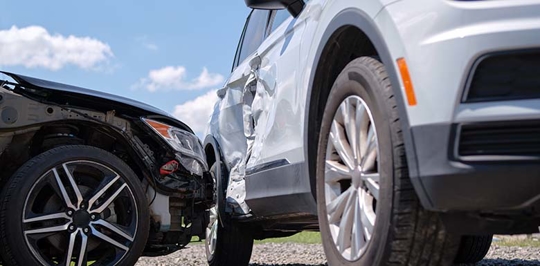No detail is insignificant in a car accident claim. Even the location of your car’s damage helps tell the story of how the accident occurred and who’s responsible. Analyzing your car’s damage, the crash report, and other key pieces of evidence could help increase your chance of obtaining substantial compensation.
Here’s more on how car accident damage is evaluated and the types of vehicle damage that determine fault.
How Crash Investigators Assess Vehicle Damage
Whenever a car crash happens in Texas, law enforcement and crash investigators arrive to assess the damage and determine how the accident occurred. Their goal is to provide an overall vehicle damage rating. To do that, they must establish the direction of force, describe the damage, and evaluate the severity of the damage.
Crash investigators specify the direction of force using a clock point diagram where frontal damage is shown by the number 12 and rear damage is shown by the number six, and so on.
Investigators must also identify the impact point of the collision, which is where the vehicles encountered one another. The Texas Vehicle Damage Guide details 17 possible points of impact.
The direction of force and the impact point of the collision provide powerful context into how the accident occurred and could help determine fault.
What Damage Location Tells You About a Car Accident
Here are a few examples of different damage locations and how they can prove negligence:
Rear End Damage
If you’re in a rear-end collision, the other driver is almost always at fault. The other driver might have been texting, reaching for something in the backseat, or otherwise not doing what they should be doing—keeping their eyes on the road. You could only be at fault if someone rear-ends you if you pull out in front of a car that has the right of way, giving them little to no time to avoid hitting you.
Side Damage
Side damage most often indicates T-Bone accidents. For example, another driver might have run a stop sign or red light and crashed into you. If the other driver failed to obey traffic laws and caused your accident, they could automatically be at fault.
Side damage could also indicate that a sideswipe accident occurred. Sideswipe accidents could happen when a car in the lane next to you fails to ensure its intended lane is clear before merging. If they recklessly change lanes, they could be responsible for your damages.
Frontal Damage
In the side and rear-end damage examples, the at-fault driver most likely also incurred frontal damage. However, there are instances where frontal damage could mean the other driver was at fault.
For example, if you have the green light to proceed through an intersection and another car runs a red light, they could cut in front of you and cause a T-Bone accident. Two-lane roads are also common locations where frontal damage might occur. Frontal damage on a two-lane road might indicate that the other driver drifted into your lane, causing a head-on collision.
Preserving Evidence After an Accident
Damage location could provide compelling evidence that supports your case. Although law enforcement officials and crash investigators provide accident reports, you should still thoroughly document the accident scene and your vehicle’s damage.
If you can, take pictures and videos of your car’s damage and turn them over to your attorney to use as evidence in your claim. Further, pictures of skid marks and debris could provide more details on how the accident occurred. The more evidence you gather at the scene, the better. The longer time passes, the easier it is for evidence to fade.
Injured in a Texas Car Accident? Call Kemmy Law Firm
Determining fault based on your car’s damage requires the help of an experienced attorney. The Kemmy Law Firm serves clients in the Permian Basin and has been helping client prove their cases for decades. Our team has access to the resources it takes to evaluate vehicle damage, like expert witnesses who can recreate your accident to determine how it occurred.
Their findings could increase your chance of receiving all the compensation you deserve. Contact our firm today at 844-334–4388 to schedule a free consultation.
Kemmy Law Firm serves clients across Texas and New Mexico:
Car Accident Lawyers in Odessa, Texas
101 N Jackson Ave
Odessa, Texas 79761
Car Accident Lawyers in Hobbs, New Mexico
1601 N. Turner, Suite 417
Hobbs, NM 88240
Car Accident Lawyers in San Antonio, Texas
1924 N Main Ave
San Antonio, Texas 78212
The post How Can Damage Location Prove Fault in a Car Accident? appeared first on Kemmy Law Firm.






